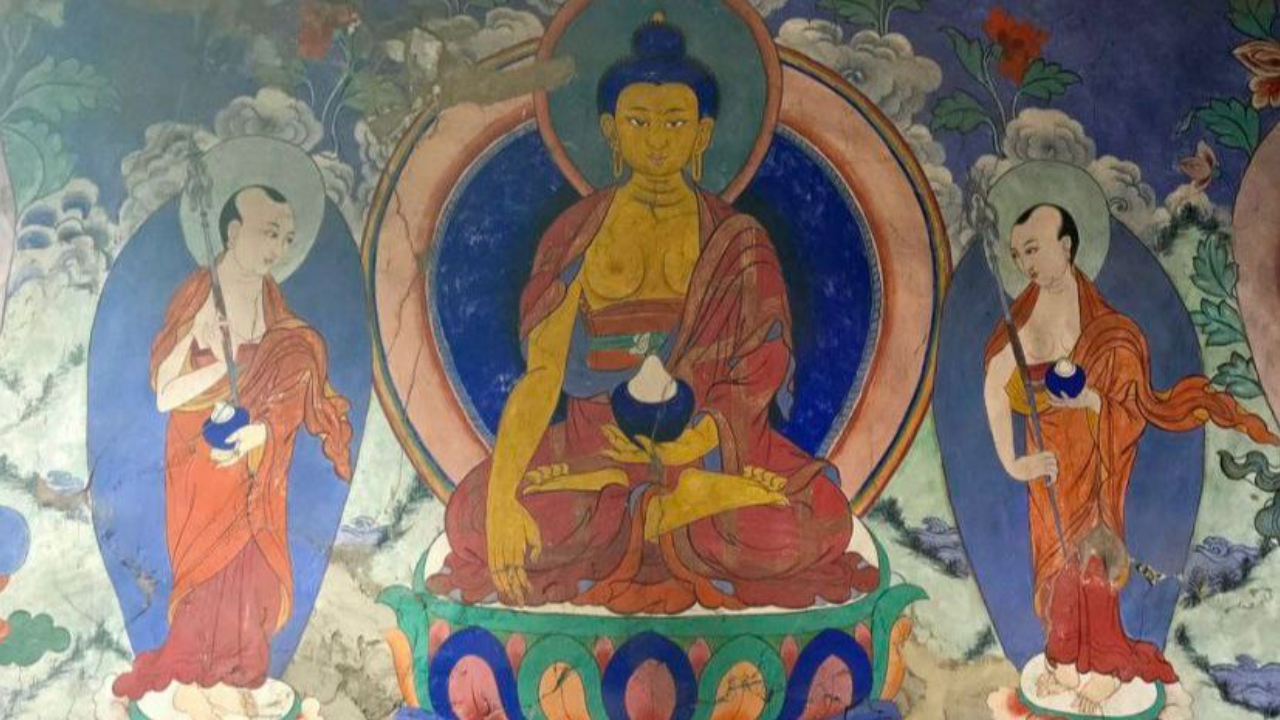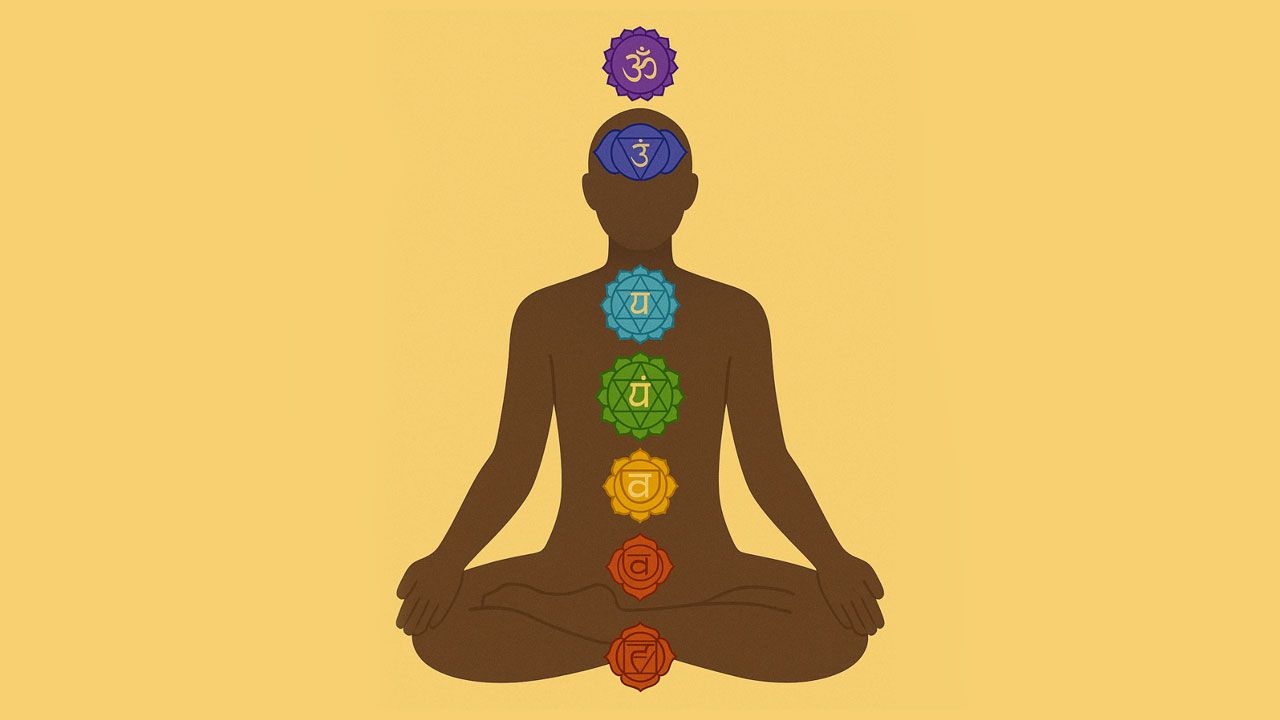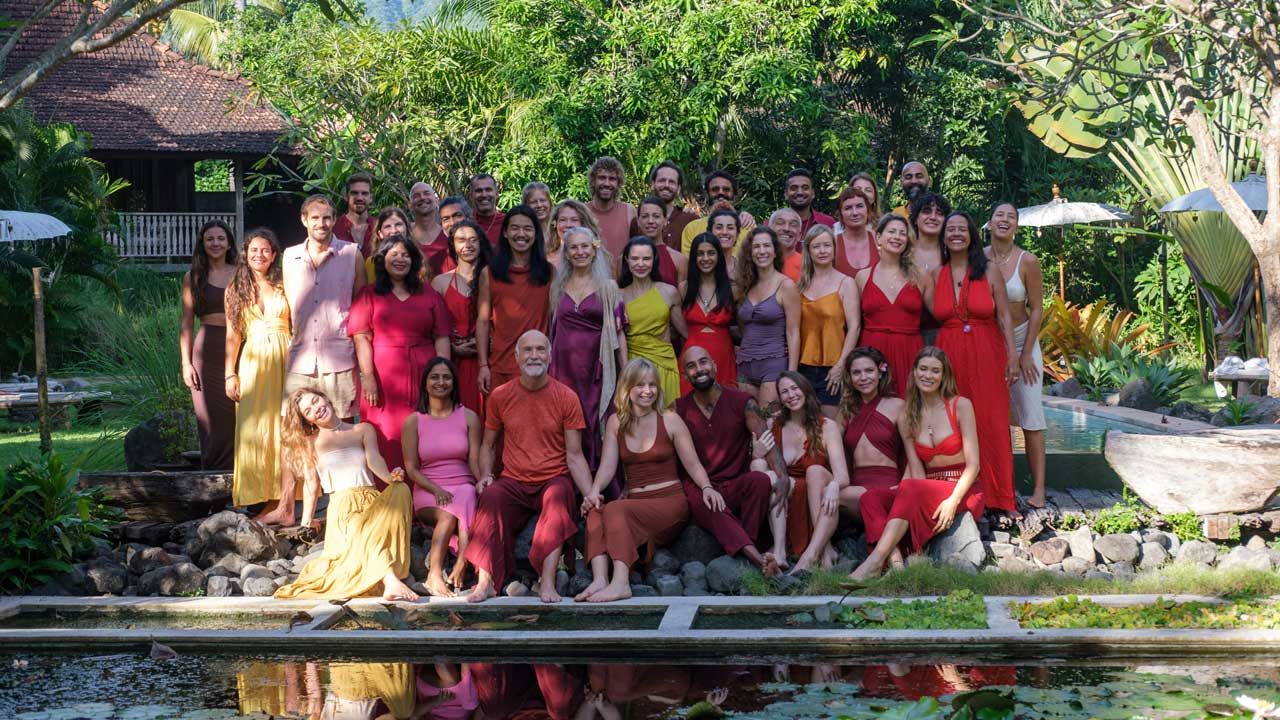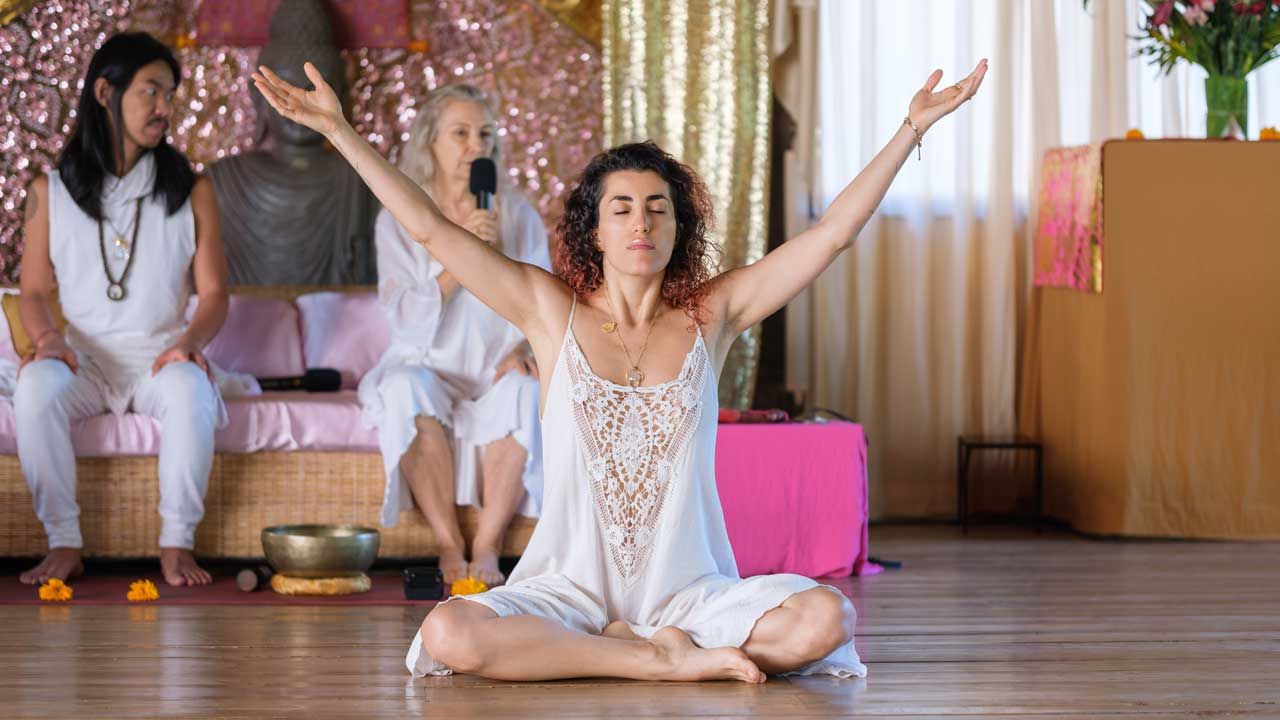Tantra Yoga: Definition, Techniques, Poses, & Health Benefits
Jul 29, 2024
Tantra yoga is a practice that allows you to transcend the mundane and connect with the depths of your being on a profound level. It is a journey that awakens your senses, ignites your passion, and unlocks the gateway to an elevated state of consciousness.
In this article, we'll embark on an exhilarating exploration of Tantra Yoga, unveiling its techniques, poses, and the myriad of health benefits that await those willing to embrace this transformative path. Prepare to be enticed, empowered, and forever changed as you delve into the heart of this ancient wisdom.
What is Tantra Yoga?
Tantra yoga is a spiritual tradition that originated in ancient India, blending physical practices with a profound exploration of consciousness, energy, and the divine.
Unlike other yoga styles that primarily focus on physical postures (asanas)and breath control (pranayama), tantric yoga takes a holistic approach, integrating these elements with meditation, mantra, ritual, and the study of subtle energies within the body.
At its core, tantric yoga aims to awaken the kundalini shakti, the dormant spiritual energy believed to reside at the base of the spine. Through a systematic unfolding of this energy along the chakras (energy centers), you can achieve self realization, enlightenment, and a profound connection with the divine.
What’s the point of Tantric Yoga?
The ultimate goal of the tantric yogi is to attain moksha, or liberation from the cycle of birth, death, and rebirth. This is achieved through the realization of your true nature as pure consciousness, transcending the limitations of the ego and merging with the divine.
Tantric practices are designed to help you dissolve the barriers between the physical and spiritual realms, allowing you to experience the unity of all existence.
The Components of Tantra
Tantra Groups and Trainings offer you the opportunity to discover a harmonious union of opposite polarities within. When any two opposites meet, an alchemical transformation takes place, and there, in the middle of this union, we experience the divine. Integral aspects of the Tantra journey include:
- Mantra
- Mudra
- Meditation
- Ritual
- Sacred Geometry
- Yantra
- Conscious Emotional Release
- Working with the 5 Elements
- Activation of Kundalini Energy
- Opening Chakras & Energy Bodies
- Exploring subtle realms
- Love & Devotion
- Understanding and bridging all Polarities
- The Alchemy of Sacred Union
- Discovering the divine within the mundane
Overcoming Challenges & Discovering Wholeness
As we go through life, we may encounter traumatic events or challenges that can lead to feelings of isolation, soul-searching, and questions around our identity and purpose. This state of being is often linked to early childhood patterns, ancestral trauma, or past life issues that have been left unresolved and influence our behavior, thoughts, and emotions.
Through both tantra and yoga practices, we are able to reconnect with our wholeness. We discover that we are living in an ocean of love and consciousness. New streams of inspiration, creativity, and connectivity awaken within, and we are able to express ourselves in wonderful ways. We discover a harmonious unity of body, mind, and soul.
The Chakra Map: A Guide to Self-Transformation

Tantra & Yoga both guide you on an experiential journey into Kundalini Energy and the 7 Chakras, supporting you to dive deeply into your own self-transformation.
The Chakra Map is fundamental for embodying both Tantra & Yoga and for unfolding one's own potential. Below is a description of the 7 main chakras:

Muladhara
The sex center, encompassing the whole pelvic area, is associated with the color red. It represents the life lesson of survival instinct, procreation, animalistic tendencies, eroticism, and inner ecstasy. The Muladhara center is connected to the earth element and has a male positive polarity, being receptive in females.

Swadisthana
The lower belly, associated with the color orange, represents the life lesson of birth and death, as well as learning fluidity in all the emotions that arise between these two polarities. Swadisthana is connected to the water element and has a female positive polarity, being receptive in males.

Manipura
The solar plexus, associated with the color yellow, represents the life lesson of becoming vast enough to contain the contradictions posed by life, such as power and vulnerability. When these contradictions meet, we experience the ultimate truth. As we open this chakra, our supreme intelligence is activated. Manipura is connected to the fire element and has a male positive polarity, being receptive in females.

Anahata
The center of the chest, known as the heart chakra, is associated with the colors green or rose. It represents the life lesson of love, nurturing, and compassion, opening into oneness with the universal heart. Anahata is connected to the air element and has a female positive polarity, being receptive in males.

Vishuddha
The throat, associated with the color turquoise, represents the life lesson of becoming a co-creator with the divine, expressing your soul calling through creativity, and learning to speak from a place of truth. Vishuddha is connected to the ether element and has a male positive polarity, being receptive in females.

Ajna
The forehead, between the eyebrows, known as the third eye, is associated with the color indigo blue. It represents the life lesson of expanding intuition, clairvoyant vision, and surrendering the ego to the wisdom of the soul. Ajna is connected to the etheric realms and has a female positive polarity, being receptive in males.
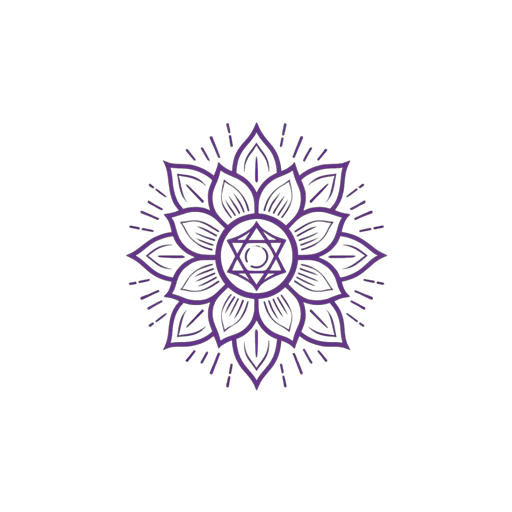
Sahasrara
The crown of the head, associated with the color violet merging into white light, represents the life lesson of opening into universal consciousness, beyond duality, becoming one with all that is, and experiencing an orgasm with the universe. Sahasrara is connected to universal energy and has a polarity that is beyond duality.
The Eight Limbs of Yoga
According to Patanjali, the sage who systematized the practice of yoga, there are eight limbs or aspects to the yogic path, each offering condensed spiritual teachings and practices. These eight limbs provide a comprehensive roadmap for evolving into higher states of consciousness and realizing our full potential as human beings.
- Yama: One's behavior towards others (self-restraint - in regard to how we affect others through our actions.) It is aligned with the heart. It means in essence "I am the other. If I hurt the other, I hurt myself.
- Niyama: How one behaves with oneself. Take care of your own well-being. Love thyself.
- Asana: Physical movements done with awareness. ("That which is stable and blissful is Asana")
- Pranayama: The art of breathing.
- Pratyahara: Turning within, in order to access other dimensions of reality.
- Dharana: Unwavering attention, concentration. "The observer becomes the observed."
- Dhyana: Meditation, becoming a witnessing consciousness.
- Samadhi: Dreamless sleep, while retaining awareness.
The first four limbs are considered external practices, while the last four are internal practices. Together they form an integrated system for personal transformation and spiritual awakening through physical, ethical, energetic and meditation practices.
What are The Benefits of Tantra Yoga?

Enhanced Mindfulness and Awareness
Through practices like meditation, breathwork, and exploring subtle energy centers, tantric yoga cultivates a heightened state of presence and mindfulness. You become more attuned to your inner worlds, thoughts, emotions and energetic states. This expanded awareness allows you to navigate life's circumstances with greater clarity and intentionality.
Improved Relationship Dynamics
A core teaching of tantra is the union of opposites, masculine and feminine, light and dark, passion and peace. By embracing these polarities within yourself, you develop a deeper understanding and appreciation for the complementary forces in your relationships.
Increased Stress Reduction
The meditative techniques and emphasis on being fully present in tantra yoga act as powerful antidotes to the restlessness and anxiety of modern life. As you learn to quiet the mind, regulate your breath, and channel energies consciously, you experience profound states of relaxation and inner stillness.
Greater Emotional Balance
Tantra philosophy teaches that blocking or suppressing emotions leads to energetic stagnation and imbalance. Through practices like conscious tantric breathwork, movement, and sounding, you are guided to fully experience and integrate your emotions in a healthy way. This process cultivates emotional intelligence, self-acceptance, and equilibrium.
Physical Health Benefits
While not as aerobic as some yoga styles, tantric practices like asana and pranayama bestow great physical benefits. These include enhanced strength, flexibility, cardiovascular health, detoxification, and improved circulation of life-force energy throughout the body's energetic pathways.
Spiritual Growth and Personal Transformation
At its core, tantric yoga is a path of spiritual awakening and personal transformation. By exploring the subtle layers of consciousness and energy, practitioners gain profound insights into their true nature beyond the egoic self. This expanded awareness ignites a journey of letting go of limiting beliefs and embodying one's highest potential as a vibrant, creative, and radiant being.

Master the Art of Sacred Love - Get Your Copy of Tantra Alchemy Today!
Within the pages of this transformative book, you'll discover the ancient art of tantric yoga & meditation and how to harness its power to cultivate profound intimacy and divine connection with your partner.Tantra Alchemy guides you on a journey of opening your heart, amplifying pleasure, and merging polarities through sacred tantric rituals and couple's tantra practices unlike anything you've experienced before.
What Happens During Traditional Tantra Yoga?
A typical tantra yoga session often begins with chanting and the sanctification of the space through mantra recitation. This helps attune you to the sacred nature of the practice.The session then progresses into a series of yoga asanas (postures) specifically designed to induce flexibility in the body and activate the chakras.
Proper alignment and deep breathing are crucial as each posture is meant to invite every cell of the body into a state of blissful equilibrium. The asanas may be accompanied by the chanting of Sanskrit mantras, which are powerful sound vibrations that help tune you to the source of all creation.
Pranayama (breathwork) is also an integral part, as conscious regulation of the breath is seen as the key to channeling life-force energy. After the asana sequence, the practice often concludes with Shavasana (Corpse Pose), where practitioners lie down and let go of all effort, sinking into a deep, meditative bliss. This may be combined with Yoga Nidra.
There can be variations such as fire-breathing practices to stoke the chakras, partner asanas to explore the union of masculine and feminine, laughter as a meditative tool, emotional fluidity techniques, and even ecstatic dance. Proper breathing is paramount in tantric yoga, as it is seen as the vehicle to achieve spiritual transcendence as well as physical vitality and health.
How Do Tantric, Traditional, & Mainstream Yoga Differ?

Traditional yoga, based on the Yoga Sutras of Patanjali, views the ultimate goal as transcending human afflictions and attaining samadhi (enlightenment) through strict adherence to ethical principles and an eight-fold path of practices.
Tantric yoga, on the other hand, stems from the non-dual Tantric traditions of India and views the human form itself as a vessel for the divine. Rather than renunciation, it embraces all aspects of life - including sensuality and emotions - as gateways to spiritual liberation.
Mainstream yoga, as practiced in the West, emphasizes the physical practice of asanas for fitness, stress relief, and therapeutic benefits, with less focus on the spiritual aspects. Traditional yoga places emphasis on mastering the eight limbs, including ethical discipline (yamas and niyamas), physical postures (asanas), breath control (pranayama), sense withdrawal (pratyahara), concentration (dharana), meditation (dhyana), and samadhi.
Tantric yoga incorporates practices like mantra chanting, visualization, ritual, and working with subtle energies through chakra activation. There is also a strong focus on embracing opposites (e.g., masculine/feminine) and using sexual energy as a path to enlightenment.
While the philosophical roots differ, all forms of yoga can potentially lead practitioners toward greater self-awareness, mind-body harmony, and ultimately, a union with the divine essence within.
How To Practice Tantra Yoga
1. Start with the Basics
Begin by learning the fundamental practices like breathwork (pranayama), basic asanas (postures), and meditation. Get comfortable with techniques to quiet the mind and become more self-aware.
2. Find a Qualified Teacher
Seek guidance from an experienced tantric yoga teacher or join an established school. Having proper instruction, especially for the more advanced practices involving energy work, is crucial.Cultivate Presence and Intention
Tantric yoga is not just a physical exercise. Set an intention for your practice and bring full presence and reverence to each session. This will allow you to tap into the deeper spiritual dimensions.
Our Tantra Essence school offers comprehensive Tantra & Yoga Teacher Trainings for in-depth study, providing you with the guidance and support needed to navigate the rich complexities of tantric practice.
3. Incorporate into Daily Life
While dedicated practice sessions are important, tantric principles encourage integrating presence, sensuality, and mindfulness into everyday activities like eating, walking, and relating to others.
4. Be Patient and Non-Judgmental
Don't get attached to goals or judge yourself. Let the practice unfold naturally and meet yourself with compassion through the process of self-discovery.
5. Consider Joining a Tantra Community
The journey can be greatly enriched by joining a community of like-minded practitioners for satsangs, fire rituals, ecstatic dances, or other group practices.

Upcoming Tantra Essence Events
Join a community of like-minded souls and elevate your consciousness with our transformative Tantra retreats & trainings.
Different Poses of Tantra Yoga
1. Yab-Yum (God-Goddess Pose)
This seated, embracing posture represents the sacred union of the masculine (upright) and feminine (open) energies. It cultivates polarity awareness and chakra integration.

2. Lotus Pose (Padmasana)
The iconic cross-legged seated position is conducive for pranayama, meditation, and opening the higher chakras. It symbolizes expanding consciousness.

3. Cobra Pose (Bhujangasana)
This heart-opening backbend energizes the sacral and solar plexus chakras, igniting passion and personal power.
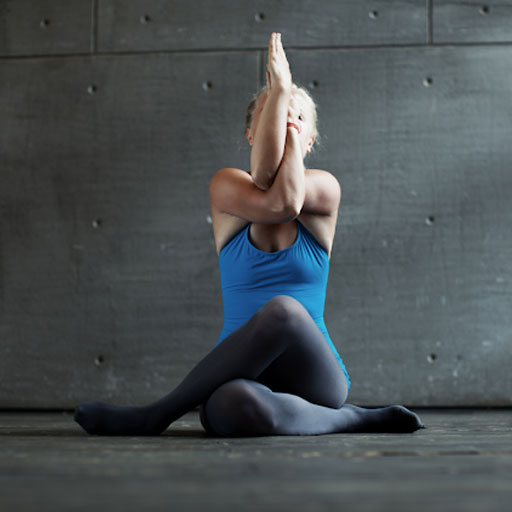
4. Eagle Pose (Garudasana)
The intricate arm and leg binds in this pose help practitioners become centered, focused, and transcend dualities within.
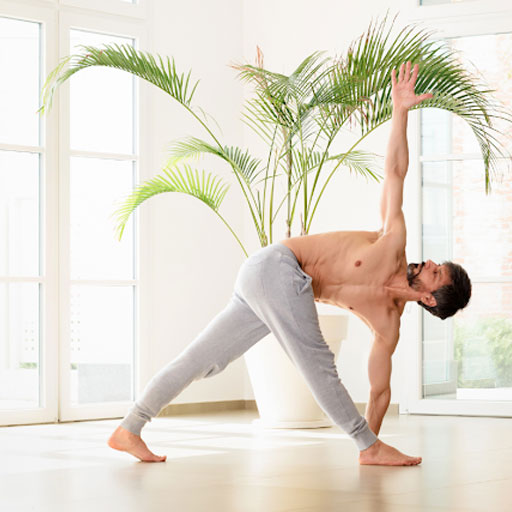
5. Triangle Pose (Trikonasana)
This standing posture promotes stability and alignment of the first three chakras, cultivating groundedness and vitality.
Tantra Yoga Alone vs With a Partner
For many, tantra yoga begins as a solitary journey of self-discovery and inner union. Practicing alone allows you to go inward, get in touch with your own energy, work through stagnation, and connect with your own divine essence. Solo practices like meditation, pranayama, chakra work, and self-exploration through movement and sound can be profoundly liberating.
While the inner work is crucial, tantric philosophy teaches that the ultimate reunion is between the masculine and feminine energies, within and without. Practicing tantra yoga with a woman or male committed partner adds a whole new dimension as you become attuned to the dance of these polarities.
Coordinated breathing, synced movement, energy circling, and the buildup of sexual polarity are all part of the combined practice leading to states of ecstatic union and transcendence of individual boundaries. Importantly, the partner practice is not merely about sex but rather channeling that primal life force toward enlightenment.
Tantric Yoga Poses for Couples

1. Double Tree Pose (Vrikshasana)
Standing face to face, holding each other's outstretched arms, this pose builds strength, balance, and synchronized breathing between partners.
2. Seated Spinal Twist (Ardha Matsyendrasana)
Sitting in a twist with backs pressed together, this compact posture promotes spinal flexibility and heart-opening between partners.
3. Partner Forward Bend (Paschimottanasana)
One partner is seated with legs extended while the other drapes their body over their partner's legs and torso, facilitating a deep, supported forward fold.

4. Double Downward Dog (Adho Mukha Svanasana)
Both partners are in downward dog position facing each other, or if you have the strength, with the one partner resting the feet on the other’s back while both perform downward dog position. This is ideal for synchronizing breath and experimenting with tantric gazing or moving into partner inversions.
5. Back-to-Back Chair Pose (Utkatasana)
Sitting back-to-back in this grounding pose, partners can coordinate breaths, rock subtly, and channel circulating energy between their base chakras.
Key Takeaways
More than just a physical discipline, tantric yoga is a portal into the deepest realms of human consciousness and spiritual awakening.
The key teachings are inviting you to embrace the fullness of your existence, the light and dark, masculine and feminine, human and divine. From the ancient yogis who first walked this path to modern-day practitioners, the message resounds: by lovingly accepting all aspects of yourself and this human experience, the shackles of limitation dissolve.
Let the insights you've gleaned be not just theoretical knowledge, but a call to embody the practices that will awaken your true nature. For tantra is a living tradition, a vibrant philosophy that extends far beyond the yoga mat into each sacred moment and experience of your life.
As you move forward on this unfolding journey, carry the wisdom of tantra in your heart. Let it be the lodestar guiding you to ever-greater expanses of authenticity, intimacy, radiance, and freedom. The path that began with a whisper from the ancient sages now echoes through your soul, beckoning you to live in eternal union with the One source that births all creation.

FAQ
What is Tantra?
Tantra is a holistic spiritual system originating from ancient Hindu and Buddhist traditions. Its goals are spiritual growth and enlightenment through the integration of physical, mental, and spiritual practices. While often associated with sexual practices, tantra has broader applications, emphasizing meditative techniques, rituals, and embracing all aspects of human existence as pathways to the divine.
What is Left and Right-Hand Tantra Yoga?
There are two main philosophical paths within tantra yoga. Right-Hand Tantra (Dakshinachara) focuses on meditation, yogic practices, and rituals conforming to societal norms. Left-Hand Tantra (Vamachara) may involve practices considered transgressive, such as using substances or sexual rites, challenging norms to achieve enlightenment. Both paths ultimately aim to transcend the self, albeit through different means.
How is tantra yoga different from tantra in sexual activity?
Tantra yoga includes a wide range of practices like breathing, meditation, and energy work to enhance spiritual connection and self-awareness. Tantric sexual practices specifically use sexual energy and rituals as a pathway to enlightenment.
What is the meaning of tantra?
The word "tantra" is derived from the Sanskrit roots "tan" meaning "to weave or expand" and "tra" meaning "tool or instrument." This conveys the fundamental premise of tantra, it is a set of tools and techniques for expanding consciousness and transcending the limitations of the physical and mental realms.
How does tantra yoga vs tantric sex differ?
Tantric yoga primarily involves individual spiritual practices like meditation, breathwork, and postures aimed at personal growth. Tantric sex focuses on the sacred union through conscious sexuality and intimacy as a means for spiritual awakening when performed mindfully with consent.
Can you do tantra yoga at home?
Yes, tantric yoga can be practiced at home through breathing exercises, guided meditations, and basic postures. Setting up a dedicated space and attending online classes can provide structured guidance. This makes tantric practices accessible for individual spiritual development.









